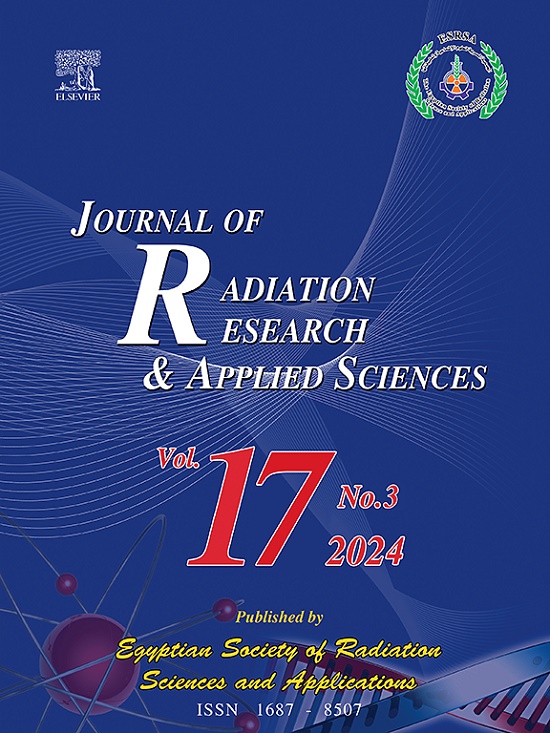沃尔特- b纳米流体中的辐射和回旋微生物在拉伸片上流动
IF 1.7
4区 综合性期刊
Q2 MULTIDISCIPLINARY SCIENCES
Journal of Radiation Research and Applied Sciences
Pub Date : 2025-05-29
DOI:10.1016/j.jrras.2025.101644
引用次数: 0
摘要
本文研究了拉伸片诱导的均匀和非均匀Walter-B纳米流体的流动特性。特别注意了熔化和磁场对流动行为的影响。利用微生物守恒方程,结合Lewis数、Peclet数和微生物差异参数等关键参数,对可运动微生物的分布进行建模。同时考虑了热辐射和非均相反应参数的影响。为了便于分析,利用相似变换将控制偏微分方程转化为一组常微分方程。然后利用同伦分析法得到了一个收敛的级数解。进一步探讨了普朗特数、磁场强度、辐射、热泳、布朗运动、生物对流、佩莱特数、微生物差异参数等物理参数的影响。结果表明,速度场随磁参量的增大而减小,温度场随辐射参量的增大而减小。此外,微生物浓度随刘易斯数的增加而下降。本文章由计算机程序翻译,如有差异,请以英文原文为准。
Radiation and gyrotactic microorganisms in Walter-B nanofluid flow over a stretching sheet
The present study investigates the flow characteristics of both homogeneous and heterogeneous Walter-B nanofluids induced by a stretching sheet. Special attention is given to the effects of melting and magnetic fields on the flow behavior. The distribution of motile microorganisms is modeled using a microbial conservation equation, incorporating key parameters such as the Lewis number, Peclet number, and the microorganism difference parameter. The influence of thermal radiation and the heterogeneous reaction parameter is also considered. To facilitate the analysis, the governing partial differential equations are transformed into a set of ordinary differential equations using similarity transformations. A convergent series solution is then obtained through the application of the Homotopy Analysis Method (HAM). The study further explores the effects of various physical parameters, including the Prandtl number, magnetic field intensity, radiation, thermophoresis, Brownian motion, bioconvection, Peclet number, and the microorganism difference parameter. Results indicate that the velocity field decreases with an increase in the magnetic parameter, while the temperature profile diminishes with higher values of the radiation parameter. Furthermore, the concentration of microorganisms is observed to decline with increasing Lewis number.
求助全文
通过发布文献求助,成功后即可免费获取论文全文。
去求助
来源期刊

Journal of Radiation Research and Applied Sciences
MULTIDISCIPLINARY SCIENCES-
自引率
5.90%
发文量
130
审稿时长
16 weeks
期刊介绍:
Journal of Radiation Research and Applied Sciences provides a high quality medium for the publication of substantial, original and scientific and technological papers on the development and applications of nuclear, radiation and isotopes in biology, medicine, drugs, biochemistry, microbiology, agriculture, entomology, food technology, chemistry, physics, solid states, engineering, environmental and applied sciences.
 求助内容:
求助内容: 应助结果提醒方式:
应助结果提醒方式:


